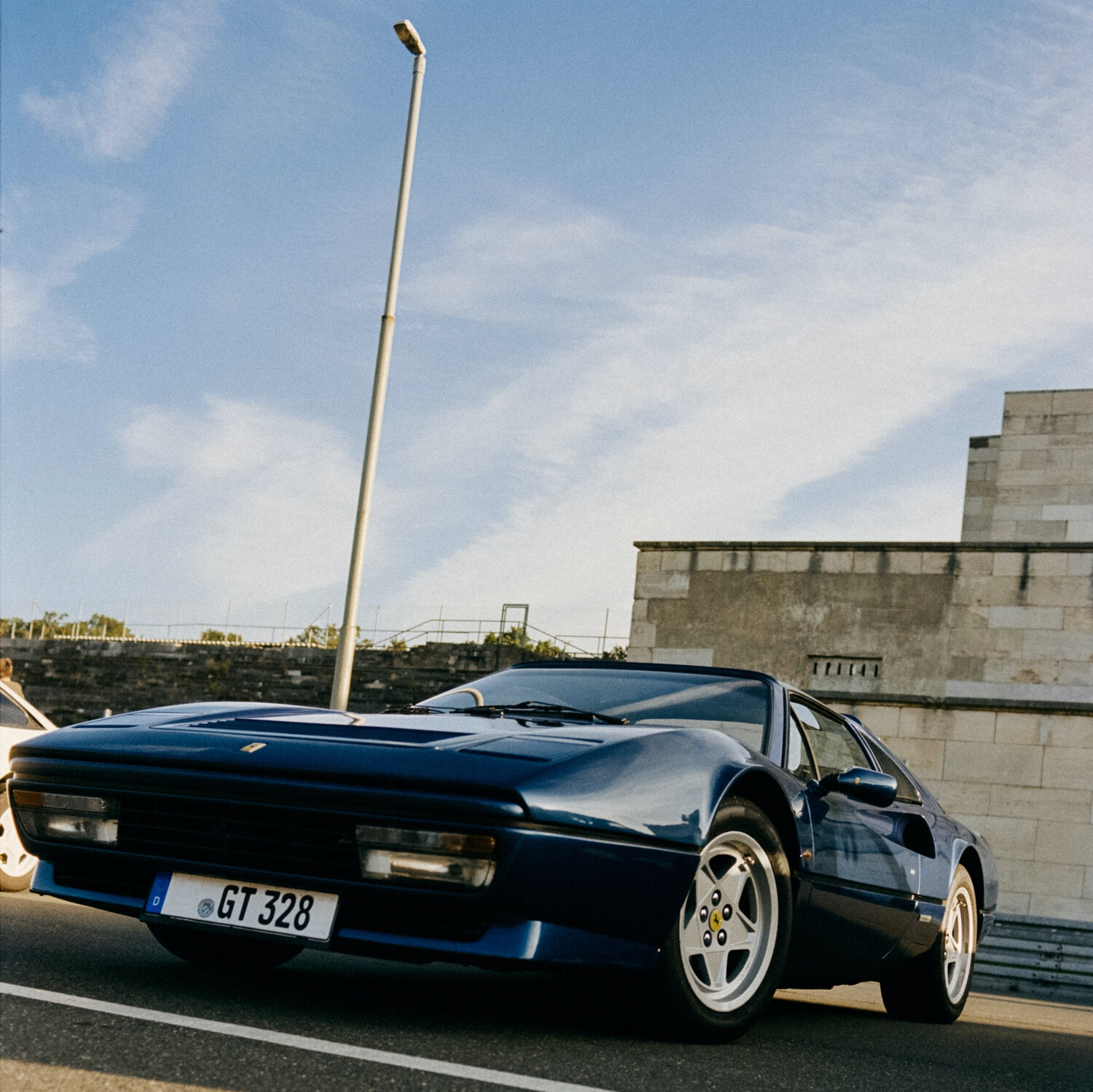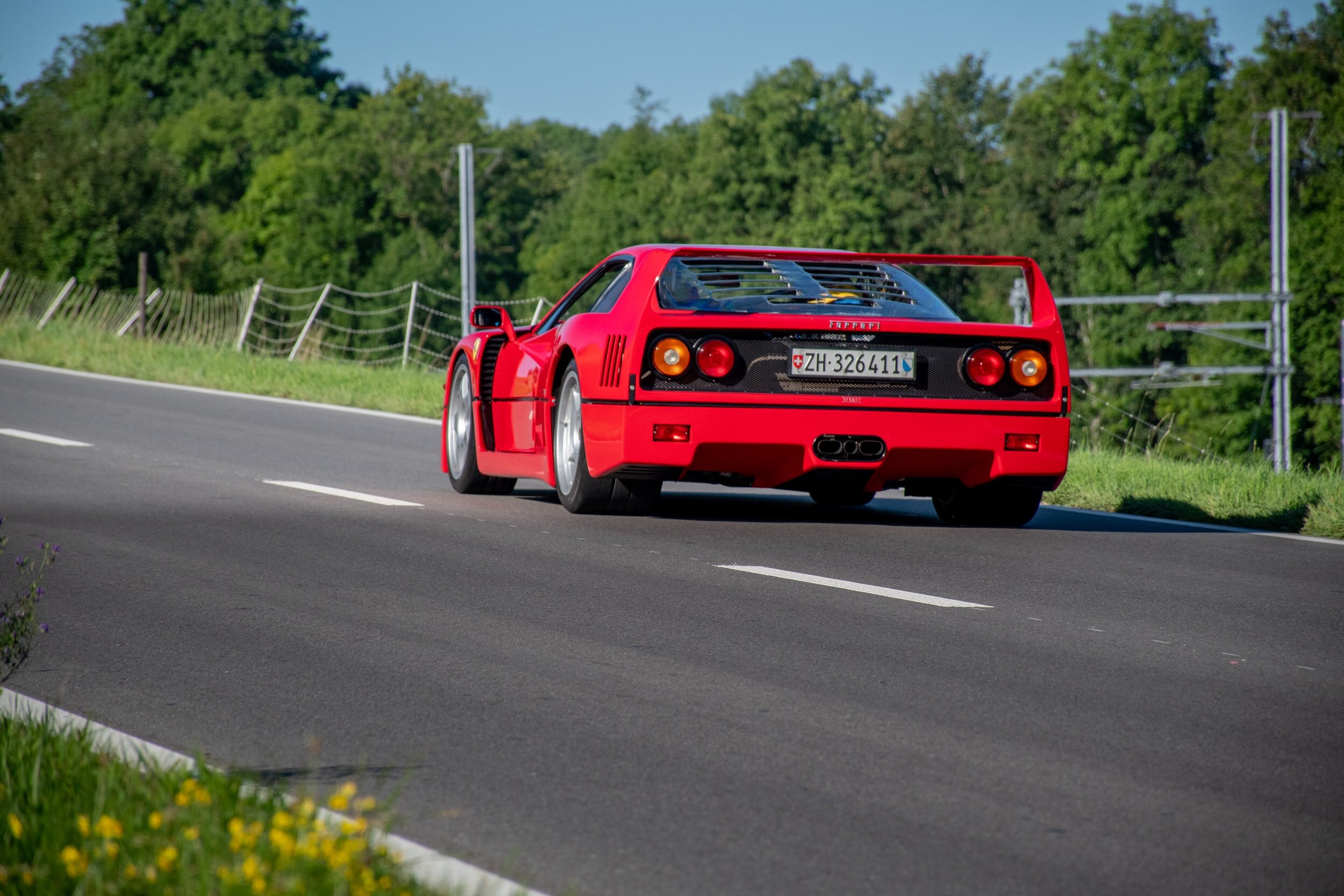Iconic Ferraris of the 1980s
By 1980, Ferrari was a well-established and globally recognizable sports car brand of the highest order. After the glorious '60s, the company bravely entered the '70s only to be hit by recession and oil crisis like the rest of the industry. However, the '80s looked promising, and Enzo was keen on developing his vision of ultimate sports cars even further. Modern materials and technology, wedge-shaped design with pop-up headlights, and a wider range of models helped to cement its position on the market as an absolute leader in its segment.
Interestingly, we can call the '80s the last decade of the classic and first decade of modern Ferrari as a brand. Some of the models produced in the '80s are based on the older technology and design and felt a bit outdated during the period defined by the electronics and turbocharged engines. At the same time, Ferrari introduced several highly influential cars that embraced modern technology and set the pace for development for decades to come. That is why the '80s are one of the defining era in Ferrari's history and a period full of exciting and controversial machinery that still captures the imagination of automobile aficionados.
Ferrari Mondial (1980 to 1993)
Back in the days of Enzo Ferrari, the company was always on the brink of financial disaster. Over the years, several "economy" models have been released simply to provide it with the much-needed influx of cash. The Mondial is such a model and had since been considered one of the worst Ferraris ever made.
The reason for such poor reputation is that Mondial was not as fast, powerful, or good looking as the rest of the lineup. It was obviously designed as an entry-level model and available in 2+2 form and as a coupe or convertible. Initially, powered by 3.0-liter V8 from 308 GTB/5, early Mondials had poor performance, and only later models with turbocharged engines managed to post respectable 0 to 60 mph acceleration times.
However, Ferrari sold over 6000 examples during its 13-year production run and provided the desired financial stability. All of this means that Mondials are plentiful and affordable and make a reasonable proposition if you are lusting after classic Ferraris but cannot afford six-figure cars.
Ferrari 208 GTB/GTS Turbo (1982 to 1985)
The Ferrari 308 GTB was everybody's favorite rear-engine model from the late '70s and sales success. However, the marketing department thought that a cheaper version of the same platform would also do good on the market, so in 1980, the 208 GTB/GTS was introduced. Unfortunately, with a 2.0-liter V8 engine and barely 150 hp, it wasn't Ferrari people wanted to buy.
But, this failure had a silver lining, and it is 208 GTB/GTS Turbo, which was introduced in 1982 and sold until 1985. In a desperate attempt to raise anemic 2.0-liter V8 performance, Ferrari put a single turbocharger and Bosch fuel injection and extracted 220 hp from this little engine. All of a sudden, the 208 GTB/GTS Turbo one of the performance bargains in the Ferrari lineup and could get to 60 mph in 6.5 seconds, which was considered pretty quick by the standards of the day.
Although less than 700 examples were made, the 208 GTB/GTS earned its place in history as the first turbocharged Ferrari ever made and a sign of the future. Today, all Ferrari models are turbocharged.
Ferrari 328 GTS (1985 to 1989)
One of the best Ferraris produced during the '80s is the famous 328 GTS. Based on legendary 308 GTS architecture and design, 328 was the improvement in just about every department. The chassis, suspension, and interior were upgraded, and the V8 engine was enlarged to 3.2-liter. The larger displacement, new fuel injection, and heads resulted in a respectable power output of 270 hp.
The 328 was introduced in 1985 and sold until 1989 and proved to be an enormous success with over 7000 cars made. With a base price of around $54,000 in 1985 ( $140,000 in 2020), 328 GTS was affordable by Ferrari standards and also faster than comparable Porsche or Lamborghini.
The significant part of its appeal was that since 328 used proven technology and engine, it was reliable, dependable, and user-friendly. It was promoted as the car you can use every day without any problems. That is why it is sought-after by collectors who want that '80s charm and practicality.
Ferrari 412i (1985 to 1989)
Hidden amongst mid-engine models, turbocharged and fuel-injected V8 engines, Ferrari 412i was old school, Gran Turismo, four-seat coupe which somehow managed to survive until 1989. Introduced in 1985 and sold until 1989, 412i was the evolution of models started in 1972 with 365 GT4 2+2. The original design and technology changed very little over the years, and by the '80s, this remained only Ferrari's front-engine car. Also, it was the only Ferrari that could be equipped with an automatic transmission.
The heart of the 412i dates back to the late '60s, and it was Colombo V12 enlarged to 4.9-liter displacement and equipped with a Bosch K-Jetronic fuel injection system. Although the engine design was old, constant improvements resulted in a respectable 340 hp power output. However, the 412i wasn't about drag racing, and it was more of a relaxed cruiser, perfect for jumping continents at high speed.
Even though it wasn't as beautiful as other Ferrari models from the same vintage, 412i still has many fans, and it represents the cheapest way to get your hands on the classic Colombo V12 without breaking the bank.
Ferrari 288 GTO (1984 to 1987)
The rise of turbocharging during the '80s was somewhat against Ferrari's philosophy of high-revving, naturally-aspirated engines. However, the 208 Turbo showed that turbochargers could be game-changers, Ferrari started thinking of implementing this technology on a separate model.
Back in the early '80s, Group B was the top class of the world rally championship. The cars that ran in this series were no-limits, turbocharged beasts with all-wheel-drive systems and up to 600 hp. The Group B cars were extraordinarily fast and dangerous, making them crowd favorite, and Ferrari wanted a piece of the action. That is why the racing department started working on 288 GTO, a road-going, homologation model.
Based on 308 chassis, 288 GTO was changed in just about every way. Bulged fenders, wider stance, and different suspension were all part of the package, but the real gem was the engine. The 2.9-liter V8, with four-valves per cylinder, was modified to accommodate twin-turbo set up and special fuel injection. The result was 400 hp and 0 to 60 time of 4.9 seconds, which made it one of the fastest street-legal cars of the '80s.
Unfortunately, before 288 GTO was able to prove itself on the track, FIA canceled Group B after several deadly accidents. This made the 288 GTO project obsolete, and Ferrari sold only 272 cars during its three-year production run.
Ferrari Testarossa (1984 to 1991)
As one of the most memorable '80s Ferraris, the Ferrari Testarossa has a unique place in the company's history. Combining the Gran Turismo narrative of legendary models from the '50s and the '60s, growl of high revving, naturally-aspirated twelve-cylinder engine and mid-engine construction, Testarossa managed to be a sharp sports car with extraordinary performance and still provide its owners with comfort and everyday usability.
Based on the '70s Berlinetta Boxer, the Testarossa was improved in every way. The 4.9-liter V12 engine was an engineering masterpiece featuring 180 degrees angle between cylinder banks and 380 hp, which made Testarossa one of the fastest cars in 1984 when it was released.
With dramatic styling that still looks modern today, sublime handling, and fantastic performance, it is no surprise that it was one of the most sought-after models of the decade. That is why Ferrari managed to sell over 7000 examples during seven years of production.
Ferrari F40 (1987 to 1992)
Introduced in 1987, F40 was the ultimate '80s Ferrari and one of the most iconic cars ever produced by this company. Envisioned as the 40th-anniversary model (hence the name), F40 was much more than just a commemorative special edition. With its enormous power, super-aggressive styling, race car technology, and sublime performance, it was the definition of a supercar as we know it today.
Based on 288 GTO technology, F40 was a step further into building a road-going race machine. It had tubular chassis, no luggage compartment, race-style windows, and the rear half of the bodywork had to be lifted in order to access the engine. The F40 used the same 2.9-liter, twin-turbo V8 as 288 GTO, but significantly more powerful at 480 hp and massive 426 lb-ft of torque. As expected, the performance was extraordinary, and 0 to 60 mph took just over 4 seconds while top speed was just under 200 mph. Back in the late '80s, those figures were astonishing and demand respect even today.
Although insanely expensive when it was released, Ferrari was shocked with its popularity amongst the wealthy enthusiasts. The 1988 Ferrari F40 MSRP was $400,000 (over $800,000 in 2020 money), but almost all buyers happily paid dealer markups just to get one in their garage. It was reported that some even paid cool million dollars to be one of the 1,315 people lucky enough to see an F40 in their garage.
Fancy a day behind the wheel of a classic Ferrari from the 1980s? Registration is now open for our Ferrari Testarossa Driving Experience and Ferrari 308 Driving Experience!






